Along the banks of the meandering Red River, Hanoi, the heart and soul of Vietnam, is an enchanting tapestry of the past and the present. This bustling metropolis, with a history that dates back over a millennium, is a captivating fusion of ancient traditions, French colonial elegance, and contemporary dynamism. As you step into the bustling streets of Hanoi, you embark on a journey through time, where cyclo-rickshaws amble past sleek skyscrapers, and centuries-old pagodas coexist harmoniously with chic cafes.
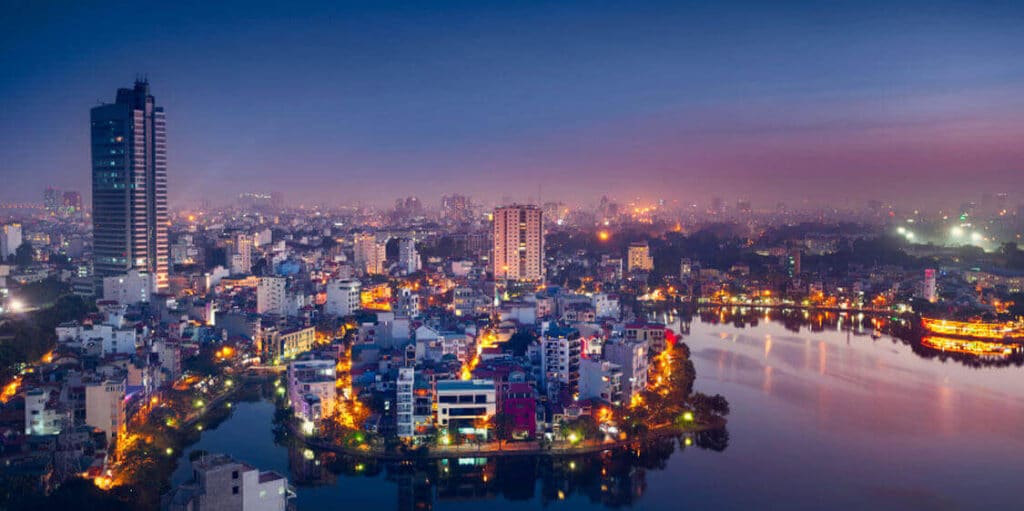
The Name that Echoes Through Ages
The name “Hanoi” itself whispers tales of history. Derived from the Vietnamese words “Ha” (meaning river) and “Noi” (meaning within), Hanoi stands as a testament to its geographical significance, nestled amidst the waters and lush landscapes of Northern Vietnam. But this name holds deeper roots, tracing its origins to the legendary dragon emperor, Ly Thai To, who named the city Thang Long, or “Ascending Dragon,” in the 11th century. It was not until the 19th century, during the French colonial period, that it officially became Hanoi.
The Heartbeat of Vietnam
Hanoi is not merely a city; it is the heartbeat of Vietnam. Its people, known as Hanoians, are known for their warm hospitality and strong cultural pride. As you wander through the maze-like alleys of the Old Quarter, you’ll encounter locals going about their daily lives, selling vibrant flowers, sizzling street food, and handmade crafts. Engage in a friendly conversation with a street vendor over a steaming bowl of pho, Vietnam’s iconic noodle soup, and you’ll quickly discover that the spirit of Hanoi resides in its people.
Recent History: The Tale of Two Cities
In the pages of modern history, Hanoi played a pivotal role in the Vietnamese struggle for independence. It was here that President Ho Chi Minh, the beloved leader of Vietnam, declared the birth of the Democratic Republic of Vietnam on September 2, 1945. His simple yet profound words echoed across Ba Dinh Square, shaping the destiny of a nation. The Ho Chi Minh Mausoleum, an imposing structure in the heart of Hanoi, pays tribute to this revered leader.
The recent history of Hanoi is also intertwined with a period of tumultuous change. After the fall of Saigon in 1975, the country was united under communist rule, marking the end of the Vietnam War. Hanoi became the capital of a unified Vietnam, while the southern city of Ho Chi Minh City (formerly Saigon) emerged as its economic hub. These two cities, distinct in their character, together weave the narrative of a nation that has risen from the ashes of war to embrace the winds of change and progress.
Hanoi: A Tapestry of Experiences
Today, Hanoi stands as a vibrant and evolving city, enticing travelers from around the world to its streets. The cityscape is adorned with a mix of architectural gems, from the grandeur of the French Quarter, where tree-lined boulevards and colonial-era buildings transport you to a bygone era, to the tranquil beauty of Hoan Kiem Lake, where the iconic red bridge leads to Ngoc Son Temple on an island in the middle of the lake.
The ancient traditions endure in the heart of Hanoi, where pagodas and temples offer solace and spiritual reflection. The One Pillar Pagoda, an architectural masterpiece resembling a lotus blossom, is a must-visit, while the Temple of Literature, dedicated to Confucius, is a testament to Vietnam’s reverence for education and scholars.
Yet, Hanoi is not bound by tradition alone. It’s a city that thrives on its modernity, with a burgeoning art scene, a lively nightlife, and a culinary landscape that’s second to none. Be it sipping egg coffee at a hidden café, witnessing a mesmerizing water puppetry performance, or strolling through the vibrant night markets, Hanoi unfolds as an intricate tapestry of experiences.
Hanoi: Your Gateway to Asia
As a gateway to Asia, Hanoi offers travelers an inviting introduction to the continent’s wonders. Its central location makes it an ideal starting point for exploring Vietnam’s diverse landscapes, from the emerald waters of Ha Long Bay to the terraced rice fields of Sapa. Hanoi’s Noi Bai International Airport connects you to major Asian cities, enabling seamless journeys to destinations like Bangkok, Singapore, and Tokyo.
But Hanoi isn’t just a transit point; it’s a destination in itself. Whether you’re drawn by its rich history, its culinary delights, its bustling markets, or its vibrant arts scene, Hanoi welcomes you with open arms. Here, you can sip tea by the serene West Lake, lose yourself in the labyrinthine streets of the Old Quarter, or witness the grandeur of the Ho Chi Minh Complex.
Hanoi isn’t just a place you visit; it’s an experience that stays with you. It’s the rhythmic hum of traffic on its tree-lined avenues, the tantalizing aroma of street food wafting through the air, and the warm smiles of its people. It’s a city that invites you to unravel its layers, discover its stories, and leave a piece of your heart behind.
So, as you embark on your journey to Asia, remember that Hanoi, the timeless city, awaits with its arms wide open, ready to share its secrets, its history, and its heart. Welcome to Hanoi, where every street is a story, and every corner is an adventure.

Sapa Vietnam
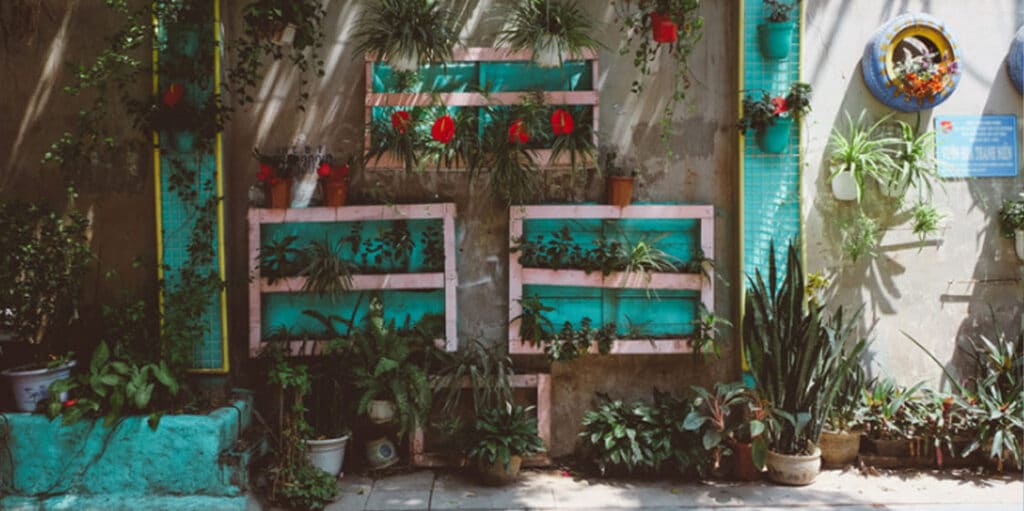
Must-Visit Attractions
Must-Visit Attractions and Landmarks in Hanoi:
Hanoi, a city steeped in history and culture, is a treasure trove of must-visit attractions and landmarks that will transport you through time and immerse you in its rich heritage:
Hoan Kiem Lake and Ngoc Son Temple: Hoan Kiem Lake, also known as Lake of the Returned Sword, is a picturesque body of water located in the heart of Hanoi. The lake is surrounded by tree-lined walkways and historic sites. A highlight of the lake is Ngoc Son Temple, situated on a small island accessible by the iconic Huc Bridge (Rising Sun Bridge). The temple is dedicated to General Tran Hung Dao and other national heroes. As you stroll around the lake, you’ll often see locals practicing Tai Chi or enjoying leisurely walks.
Ho Chi Minh Mausoleum: This monumental structure is the final resting place of Ho Chi Minh, the founding father of the Democratic Republic of Vietnam. The mausoleum is an imposing edifice made of granite, and visitors can pay their respects to “Uncle Ho” by viewing his preserved body. The experience of witnessing the changing of the guard is both solemn and impressive. Please note that there are strict guidelines for attire and behavior when visiting the mausoleum.
One Pillar Pagoda: Located near the mausoleum, the One Pillar Pagoda is one of Hanoi’s most iconic landmarks. Its distinctive design resembles a lotus flower emerging from the water, symbolizing purity in Buddhism. The pagoda’s history dates back to the 11th century when it was constructed by Emperor Ly Thai Tong. While it’s a small site, its cultural significance and architectural charm make it a must-see.
Temple of Literature (Van Mieu-Quoc Tu Giam): This ancient temple complex, founded in 1070, is a celebration of Confucianism and education. It was originally established as Vietnam’s first university and is dedicated to Confucius and his disciples. Visitors can explore well-preserved courtyards, gates, and pavilions. The site is especially vibrant during the Vietnamese New Year (Tet) when students come to pray for success in their studies.
Old Quarter: The Old Quarter of Hanoi is a bustling and captivating district, characterized by narrow winding streets and historic architecture. Here are some additional attractions within the Old Quarter:
Dong Xuan Market: This large and vibrant market is an excellent place to explore local life and shop for everything from clothes to street food.
St. Joseph’s Cathedral: An impressive Neo-Gothic cathedral that stands as a testament to Hanoi’s French colonial heritage. It’s particularly photogenic in the evening.
Hanoi Night Market: On weekends, the Old Quarter transforms into a lively night market where you can find a variety of souvenirs, local cuisine, and street performances.
Bach Ma Temple: An ancient temple dedicated to a white horse, which is believed to have guided Emperor Ly Thai To to choose the location of Hanoi. The temple is an oasis of tranquility amid the Old Quarter’s hustle and bustle.
Now, let’s continue exploring more of Hanoi’s attractions:
Vietnam Museum of Ethnology: Located a bit outside the city center, this museum offers a fascinating insight into Vietnam’s diverse ethnic groups. It features well-curated exhibits, traditional houses, and handicraft demonstrations.
Thang Long Water Puppet Theatre: Witness the traditional art of water puppetry at this renowned theater. The colorful puppets act out scenes from Vietnamese folklore and history on a water stage, accompanied by live music.
Presidential Palace and Ho Chi Minh’s Stilt House: Nearby the Ho Chi Minh Mausoleum, you can visit the Presidential Palace and Ho Chi Minh’s Stilt House. The stilt house is where Ho Chi Minh lived and worked from 1958 until his passing in 1969. It’s a modest dwelling surrounded by gardens.
Tran Quoc Pagoda: Situated on the shores of West Lake, Tran Quoc Pagoda is the oldest Buddhist temple in Hanoi, dating back to the 6th century. Its serene setting and beautiful pagoda make it an ideal place for contemplation.
Hanoi Opera House: This architectural masterpiece, reminiscent of the Opera Garnier in Paris, is a testament to French colonial influence. While attending a performance is a treat, even admiring the building from the outside is a worthwhile experience.
Remember that Hanoi’s charm extends beyond its landmarks. Wandering through its streets, trying street food, and interacting with locals will provide you with an authentic and memorable experience of this vibrant city.

How to Get To Hanoi
Getting to Hanoi is an exciting part of your journey to Vietnam. The city is well-connected to the rest of Southeast Asia, making it accessible by air, train, and bus. Here’s a detailed look at these travel options:
By Air: Noi Bai International Airport (HAN) serves as Hanoi’s primary gateway. It’s one of Vietnam’s busiest airports, handling both domestic and international flights. Here’s what you need to know when traveling to Hanoi by air:
International Flights: Noi Bai Airport is well-connected to major cities across Asia, including Bangkok, Singapore, Kuala Lumpur, Seoul, Tokyo, and more. Several international airlines, such as Vietnam Airlines, Cathay Pacific, Singapore Airlines, and Thai Airways, operate regular flights to Hanoi. If you’re traveling from outside Asia, you may need to make a connecting flight through one of these cities.
Domestic Flights: If you’re already in Vietnam or planning to explore other parts of the country, you can easily catch a domestic flight to Hanoi from cities like Ho Chi Minh City, Da Nang, and Hue. The flight duration within Vietnam is relatively short, making it a convenient option for travelers covering multiple destinations.
By Train: Traveling to Hanoi by train offers a unique and scenic experience, especially if you’re coming from the southern part of Vietnam. Here’s what you should know about train travel to Hanoi:
Reunification Express: The Reunification Express is a famous train route that runs the length of Vietnam, from Ho Chi Minh City in the south to Hanoi in the north. While the journey is lengthy, taking approximately 30 hours, it provides a picturesque view of the Vietnamese countryside. Many travelers opt for the overnight sleeper trains, which offer various classes, including soft sleeper and hard sleeper. Soft sleeper cabins are more comfortable and include bedding.
Comfort and Cost: Overnight trains provide comfort, privacy, and an opportunity to meet fellow travelers. The cost of a train ticket varies depending on the class you choose, with soft sleeper tickets being more expensive but offering greater comfort.
Booking Tickets: You can book train tickets at the train stations or through travel agencies in major cities. It’s advisable to book in advance, especially during peak travel seasons.
By Bus: Traveling to Hanoi by bus is an adventure and a budget-friendly option. Here’s what you need to know about bus travel to Hanoi:
Long-Haul Buses: Several bus companies operate long-haul services to Hanoi from neighboring countries like Laos and Cambodia. These journeys can be an adventure, offering a unique perspective on the landscape and culture. However, be prepared for long travel times, potentially uncomfortable seating, and border crossings.
Safety and Comfort: While bus travel can be an economical choice, it’s essential to choose reputable bus companies with well-maintained vehicles. Research reviews and recommendations from other travelers to ensure a safe and comfortable journey.
Border Crossings: If you’re traveling from Laos or Cambodia, you’ll likely encounter border crossings. Ensure you have the necessary visas and travel documents, and be prepared for customs and immigration procedures.
Whether you arrive in Hanoi by air, train, or bus, you’ll find the city’s charm and cultural richness awaiting you. Each mode of transportation offers a different perspective on Vietnam’s landscapes and communities, adding to the adventure of your journey to Hanoi.
Best Time To Go Hanoi
Choosing the right time to visit Hanoi can greatly enhance your experience:
Autumn (September to November): The weather is cool and pleasant, making it ideal for outdoor exploration. This season brings the vibrant foliage and clear skies.
Spring (March to April): Another great time to visit with mild temperatures and blooming flowers. Spring festivals like Tet (Lunar New Year) add cultural richness.
Winter (December to February): While chilly, Hanoi during winter has its own charm. You’ll witness festive decorations, and there’s a chance of experiencing a rare snowfall.
Summer (May to August): It can get hot and humid, with occasional heavy rains. Consider this period if you prefer lower travel costs and fewer tourists.
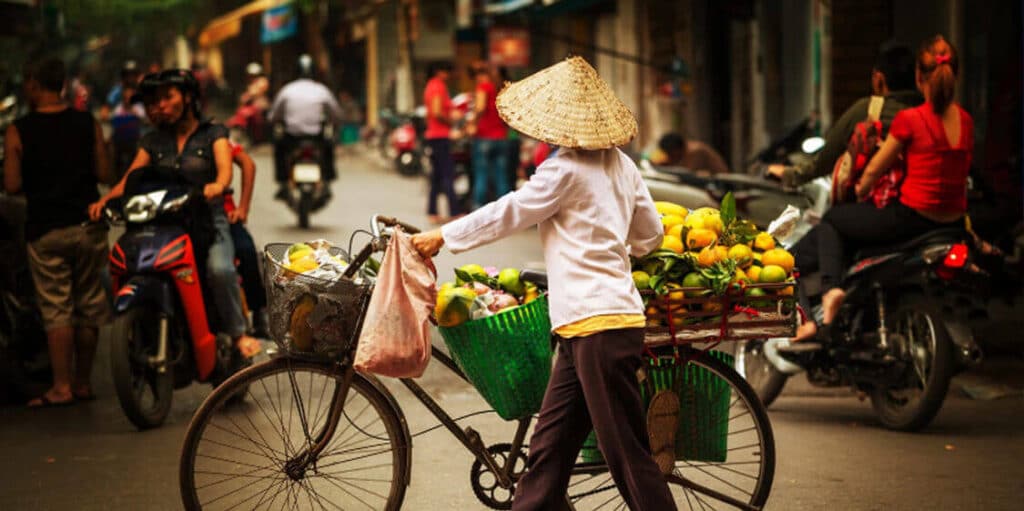
Best Way To Get Around
Exploring Hanoi’s bustling streets is an integral part of the city’s charm, offering travelers a chance to immerse themselves in its vibrant culture and rich history. Here’s a detailed look at various modes of transportation to navigate Hanoi:
Walking: Hanoi’s compact Old Quarter and the areas surrounding Hoan Kiem Lake are perfect for exploring on foot. Here’s why walking is an excellent choice:
Proximity to Attractions: Many of Hanoi’s top attractions, street markets, and historic sites are clustered within these areas, making it convenient to explore them on foot. This includes Hoan Kiem Lake, the Old Quarter, the Temple of Literature, and more.
Immersive Experience: Walking allows you to fully immerse yourself in the city’s street life. You can interact with locals, discover hidden gems tucked away in narrow alleys, and savor the delicious street food that Hanoi is renowned for.
Flexibility: You have the freedom to explore at your own pace, take detours, and capture the essence of Hanoi through photography.
Cyclo: Cyclos, traditional cycle rickshaws, offer a unique and leisurely way to experience Hanoi. Here’s why you might consider taking a cyclo ride:
Relaxing Journey: Cyclos are a comfortable and relaxed mode of transportation. You can sit back and enjoy the sights, sounds, and scents of Hanoi without the need to navigate the bustling streets yourself.
Guided Tours: Many cyclo drivers also serve as knowledgeable guides. They can provide insights into the city’s history and culture as they pedal you through the streets.
Old Quarter Exploration: The Old Quarter’s narrow streets and alleys can be challenging to navigate on foot or by car. Cyclos can effortlessly weave through these lanes, giving you access to areas that may be less accessible otherwise.
Motorbike Taxi (Xe Om): For a faster mode of transport within the city, you can opt for a motorbike taxi, locally known as “xe om.” Here’s what to consider:
Speed and Efficiency: Motorbike taxis are a swift way to get around Hanoi, especially during heavy traffic. They are particularly useful for covering longer distances quickly.
Negotiation: Before setting off, it’s crucial to negotiate the fare with the motorbike taxi driver. Ensure that you agree on the price in advance to avoid any misunderstandings.
Safety: While motorbike taxis are convenient, they may not be the safest option, especially for those unfamiliar with Hanoi’s traffic. Always wear a helmet, and consider your comfort level before choosing this mode of transportation.
Public Buses: Hanoi has an extensive public bus network that can be a budget-friendly option for getting around the city. Here are some things to keep in mind:
Affordability: Public buses are one of the most economical ways to travel within Hanoi. Fares are typically low, making it an attractive option for budget-conscious travelers.
Complex Routes: Hanoi’s bus routes can be intricate and confusing for tourists. It’s essential to research the specific routes that will take you to your desired destinations and have a clear understanding of the bus system.
Language Barrier: Most bus signage and information are in Vietnamese, which can pose challenges for non-Vietnamese speakers. It’s helpful to have the names of your destinations written in Vietnamese to show the bus driver or conductor.
Local Experience: Taking a public bus provides a unique opportunity to observe daily life in Hanoi, as you’ll be sharing the ride with local residents.
Ultimately, the mode of transportation you choose in Hanoi depends on your preferences, comfort level, and the areas you plan to explore. Each option offers a distinct experience, allowing you to discover the beauty and vibrancy of this captivating city at your own pace.
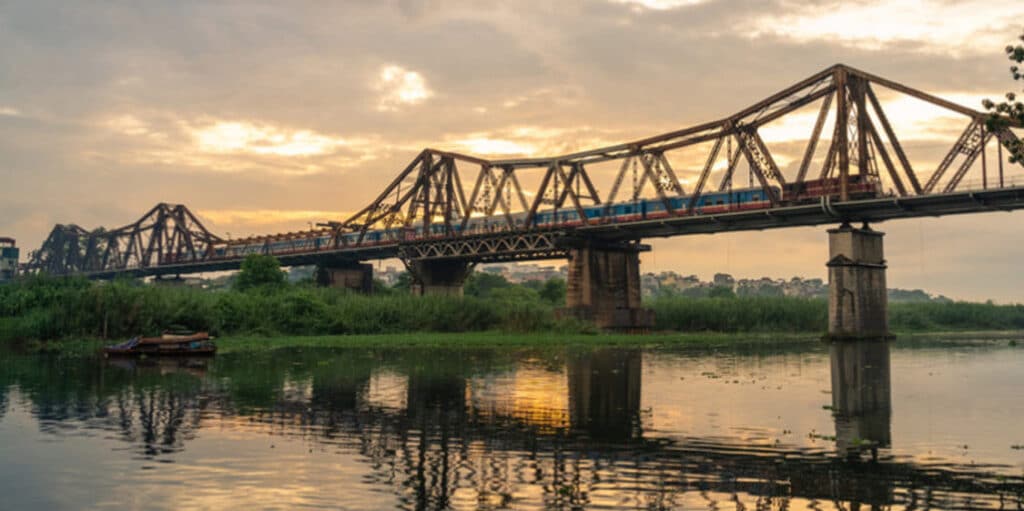
Off the Beaten Path Hidden Gems
Venture beyond the tourist hotspots to discover Hanoi’s hidden gems:
Long Bien Bridge:
- Historic Significance: Long Bien Bridge, built during the French colonial period, is not only an engineering marvel but also holds a significant place in Vietnam’s history. It played a crucial role during both World War II and the First Indochina War.
- Stunning Views: Walk or cycle across the bridge to enjoy breathtaking views of the Red River and the surrounding countryside. The bridge offers a unique perspective of Hanoi, making it a favorite spot for photographers.
- Local Life: As you explore the bridge, you’ll often encounter locals fishing or tending to their gardens along the riverbanks. This interaction provides insight into the daily lives of Hanoi’s residents.
2. Bat Trang Ceramic Village:
- Traditional Craftsmanship: Bat Trang Ceramic Village, located just outside Hanoi, is a haven for ceramic enthusiasts. Here, you can witness the age-old tradition of pottery making and try your hand at crafting your pottery pieces.
- Interactive Workshops: Many workshops in Bat Trang offer hands-on experiences, allowing you to create your ceramic art under the guidance of skilled artisans. It’s a fantastic opportunity to learn about the intricate process of molding, glazing, and firing pottery.
- Unique Souvenirs: The village is an excellent place to shop for authentic and handcrafted ceramics. From delicate teapots to intricately designed vases, you can find a wide range of ceramic products to take home as souvenirs.
3. Dong Xuan Market:
- Local Shopping: While Dong Xuan Market is not entirely off the beaten path, it offers a more authentic and less touristy shopping experience compared to some of the city’s more famous markets. Here, you’ll find a wide variety of goods, from clothing and textiles to electronics and household items.
- Street Food: The market’s surroundings are teeming with street food vendors, making it a great place to sample local delicacies. Try some of Hanoi’s famous street food dishes, like banh mi and pho, from the vendors in the area.
- Bustling Atmosphere: Dong Xuan Market is a bustling and energetic place. Exploring its maze-like alleys and stalls is an adventure in itself. It’s an excellent spot to observe local trade and daily life.
4. Thang Long Imperial Citadel:
- Historical Treasure: The Thang Long Imperial Citadel, a UNESCO World Heritage site, is often overlooked by tourists but holds immense historical and cultural significance. It served as the political center of Vietnam for over 13 centuries.
- Archaeological Site: Explore the archaeological site within the citadel, where excavations have uncovered various relics, including ancient foundations, pottery, and artifacts. These findings provide valuable insights into Vietnam’s past.
- Peaceful Escape: Despite its historical importance, the citadel offers a tranquil escape from the city’s hustle and bustle. Stroll through its expansive grounds, visit the ancient well, and contemplate the centuries of history that unfolded here.
5. West Lake:
- Scenic Retreat: West Lake, or Ho Tay, provides a serene contrast to Hanoi’s bustling streets. It’s a perfect destination for those seeking relaxation and natural beauty.
- Cafes and Eateries: Along the lake’s shores, you’ll find charming cafes and eateries where you can enjoy a leisurely meal or coffee while taking in the peaceful lake views. It’s an ideal spot for a romantic evening or a quiet escape from the city.
- Tranquil Walks: Take a leisurely walk or rent a bicycle to explore the lake’s perimeter. You’ll discover charming pagodas, lush parks, and serene corners that offer a serene atmosphere.
Venturing off the beaten path in Hanoi allows you to uncover these hidden gems, each offering a unique aspect of the city’s culture, history, and charm. Whether you’re interested in history, art, or simply finding a peaceful oasis, Hanoi has something special to offer beyond its popular tourist attractions.
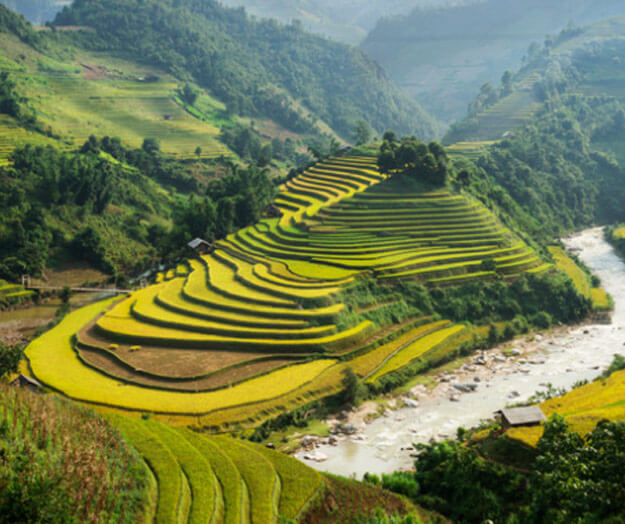
Local Cuisine / Best Restaurants?
Hanoi’s culinary scene is a delight for food lovers. Savor these local dishes and dine at some of the city’s best restaurants:
Pho: Start with Vietnam’s most famous dish, pho. You’ll find countless street stalls, but Pho Bat Dan and Pho Gia Truyen are legendary.
Bun Cha: Try this Hanoi specialty featuring grilled pork served with rice noodles and herbs. Bun Cha Huong Lien gained fame as “Obama’s restaurant.”
Egg Coffee: Sip on a frothy egg coffee at Cafe Giang, the place where this iconic Hanoi drink was invented.
Banh Mi: Grab a delicious banh mi sandwich from Banh Mi 25, known for its mouthwatering flavors.
Cha Ca La Vong: Savor grilled fish with turmeric and dill at Cha Ca La Vong, a historic restaurant with a legendary reputation.
Ha Long Bay Vietnam
Activities in Hanoi
Hanoi offers a diverse range of activities for every traveler:
Water Puppet Show: Experience this unique Vietnamese art form at Thang Long Water Puppet Theatre.
Hoa Lo Prison: Explore the history of the “Hanoi Hilton,” a prison used during the Vietnam War.
Cycling Tour: Join a cycling tour to explore the city’s outskirts, lush countryside, and rural villages.
Cooking Classes: Learn to prepare Vietnamese dishes with a cooking class. Several providers offer hands-on experiences.
Shopping: Hunt for souvenirs at local markets, boutiques, and street vendors. Don’t forget to haggle!
Unique Cultural Experiences
To truly immerse yourself in Hanoi’s culture, consider these experiences:
Attend a Festival: If your visit aligns with a local festival or celebration, like Tet or Mid-Autumn Festival, join in the festivities to witness Vietnamese traditions.
Visit a Temple: Explore Hanoi’s temples and pagodas, and consider participating in a traditional Buddhist ceremony.
Watch a Traditional Art Performance: Enjoy traditional Vietnamese music, dance, and theater performances.
Participate in a Tea Ceremony: Learn about the art of tea preparation and enjoy a calming tea ceremony.
Homestay: Stay with a local family for a genuine cultural exchange and a deeper understanding of Vietnamese life.
Language
Local Language of Hanoi
While Vietnamese is the primary language, English is widely spoken in tourist areas. Learning a few Vietnamese phrases can enhance your experience and foster connections with locals:
- Xin chào (Sin chow): Hello
- Cảm ơn (Gahm uhn): Thank you
- Bao nhiêu tiền? (Bow nyew tyen): How much does this cost?
- Một bia, xin (Moht bee-uh, sin): One beer, please
Accommodation in Hanoi
Hanoi offers a range of accommodation options to suit all budgets and preferences.
Here’s a more detailed overview of the accommodation options in Hanoi:
1. Boutique Hotels:
- Hanoi La Siesta Hotel & Spa: Nestled in the heart of the Old Quarter, this boutique gem offers a blend of luxury and local charm. The hotel boasts well-appointed rooms, a spa for relaxation, and a rooftop bar with panoramic views of the city. It’s a perfect choice for travelers seeking an intimate and stylish stay in the heart of Hanoi.
- Essence Palace Hotel: Situated in a prime location in the Old Quarter, Essence Palace Hotel combines modern comfort with Vietnamese hospitality. Guests can enjoy elegantly designed rooms, a cozy restaurant serving local cuisine, and excellent customer service. The hotel’s central location makes it convenient for exploring Hanoi’s attractions on foot.
2. Luxury Hotels:
- Sofitel Legend Metropole Hanoi: A historic landmark in Hanoi, this luxury hotel offers timeless elegance and world-class service. Dating back to 1901, it exudes colonial charm and features beautifully appointed rooms, lush gardens, a heated pool, and several dining options, including the renowned Le Beaulieu French restaurant and the Bamboo Bar.
- JW Marriott Hotel Hanoi: This modern luxury hotel impresses with its contemporary design and exceptional amenities. Guests can enjoy spacious rooms with stunning views of the city, a selection of restaurants and bars, a fitness center, and a luxurious spa. The hotel’s location near West Lake adds to its appeal.
3. Budget Hostels:
- Hanoi Rocks Hostel: Perfect for backpackers and budget-conscious travelers, Hanoi Rocks Hostel offers dormitory-style rooms and private accommodations. The hostel’s lively atmosphere, social events, and friendly staff make it an excellent choice for meeting fellow travelers. It’s located in the heart of the Old Quarter, making it easy to explore the area’s attractions.
- Central Backpackers Hostel: Known for its vibrant and sociable environment, Central Backpackers Hostel provides budget-friendly dorms and private rooms. Travelers can enjoy a range of amenities, including a bar, communal areas, and travel services. The hostel’s central location ensures easy access to Hanoi’s sights and nightlife.
4. Homestays:
- Authentic Cultural Experience: Staying in a homestay in Hanoi offers a unique opportunity to immerse yourself in Vietnamese culture. You can choose from various homestays in and around the city, where local families open their homes to guests.
- Local Hospitality: Homestay hosts often provide warm hospitality, home-cooked meals, and insights into daily life. It’s a chance to engage with locals, learn about traditions, and create lasting memories.
- Types of Homestays: Options range from traditional homes in rural villages to guesthouses in suburban neighborhoods. Whether you want to experience village life or be closer to the city center, there’s a homestay to suit your preferences.
Hanoi’s diverse accommodation options cater to travelers of all tastes and budgets. Whether you’re seeking luxury and pampering or a cozy budget-friendly stay, the city ensures you’ll find the perfect place to rest after exploring its vibrant streets and attractions.
How's the weather in Hanoi?
Hanoi’s climate varies by season, so choose your travel dates wisely:
- Spring (March to May): Mild temperatures and blossoming landscapes.
- Summer (June to August): Warm days with occasional rain showers.
- Autumn (September to November): Cool and clear weather with golden foliage.
- Winter (December to February): Cold, misty, and occasionally snowy, creating a unique atmosphere.
Recommended Itinerary
1 Week in Hanoi
Here’s a suggested itinerary for a week in Hanoi, combining popular attractions with unique experiences:
Day 1-2: Explore the Old Quarter, Hoan Kiem Lake, and Ngoc Son Temple
Day 1:
- Morning: Start your Hanoi adventure in the Old Quarter. Wander through the narrow, bustling streets lined with shops, street food stalls, and centuries-old architecture. Don’t forget to try a bowl of pho at a local eatery for breakfast.
- Afternoon: Head to Hoan Kiem Lake, an iconic symbol of Hanoi. Stroll around the lake’s picturesque promenade and visit Ngoc Son Temple, which sits on an island in the middle of the lake. Cross the iconic red bridge to reach the temple.
- Evening: Experience the vibrant nightlife of the Old Quarter. Explore the night markets, enjoy street food like banh mi and bun cha, and soak in the lively atmosphere.
Day 2:
- Morning: Begin your day with a visit to the Hoa Lo Prison, also known as the “Hanoi Hilton.” Explore its history, which includes its use during the Vietnam War.
- Afternoon: Discover the fascinating Long Bien Bridge, offering stunning views of the Red River. You can walk or cycle across this historic bridge, appreciating its unique architecture.
- Evening: Return to the Old Quarter for more exploration. Try local specialties like bun bo nam bo or nem chua nuong at street food stalls. Don’t miss sipping egg coffee at Cafe Giang.
Day 3: Visit the Ho Chi Minh Mausoleum, One Pillar Pagoda, and Temple of Literature
- Morning: Pay your respects to Ho Chi Minh by visiting his mausoleum. Witness the solemn changing of the guard ceremony. Nearby, explore the unique One Pillar Pagoda, known for its lotus-shaped design.
- Afternoon: Head to the Temple of Literature, Vietnam’s first national university. Explore its well-preserved courtyards, gardens, and historical artifacts.
Day 4: Take a day trip to the Perfume Pagoda or Bat Trang Ceramic Village
Option 1 – Perfume Pagoda:
- Take a scenic boat ride to the Perfume Pagoda complex, a Buddhist pilgrimage site. Explore the series of temples and caves set against a stunning natural backdrop.
Option 2 – Bat Trang Ceramic Village:
- If you prefer arts and crafts, visit Bat Trang Ceramic Village. Learn about traditional pottery making, try your hand at ceramics, and shop for unique souvenirs.
Day 5: Discover the vibrant history at Hoa Lo Prison and Long Bien Bridge
- Morning: Spend a bit more time exploring Hanoi’s historical sites, such as the Hoa Lo Prison, to gain further insights into the city’s past.
- Afternoon: Visit the Long Bien Bridge during the day for more photo opportunities and to appreciate its historical significance.
Day 6: Enjoy a traditional water puppet show and explore the West Lake area
- Morning: Experience a traditional water puppet show at the Thang Long Water Puppet Theatre. It’s a unique art form that showcases Vietnamese culture.
- Afternoon: Explore the West Lake area, which offers a serene escape from the city’s hustle and bustle. Visit temples, cafes, and eateries along the lake’s shores.
Day 7: Experience a cycling tour through Hanoi’s countryside or take a cooking class
Option 1 – Cycling Tour:
- Join a cycling tour to explore Hanoi’s picturesque countryside, rural villages, and lush landscapes. It’s a fantastic way to see a different side of the city.
Option 2 – Cooking Class:
- Enroll in a Vietnamese cooking class to learn how to prepare delicious local dishes. You’ll get to shop for ingredients at a local market and then master the art of Vietnamese cuisine.

